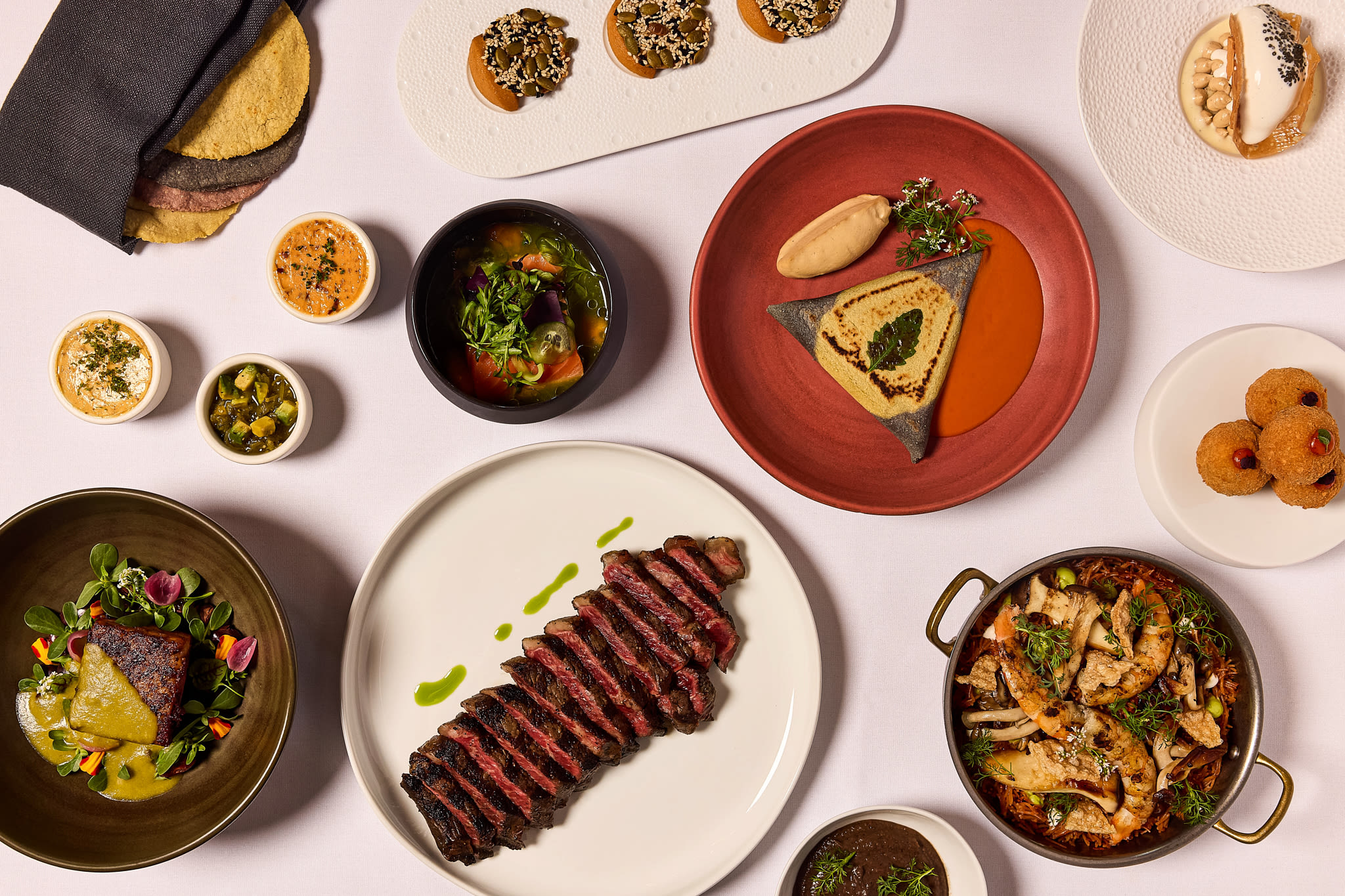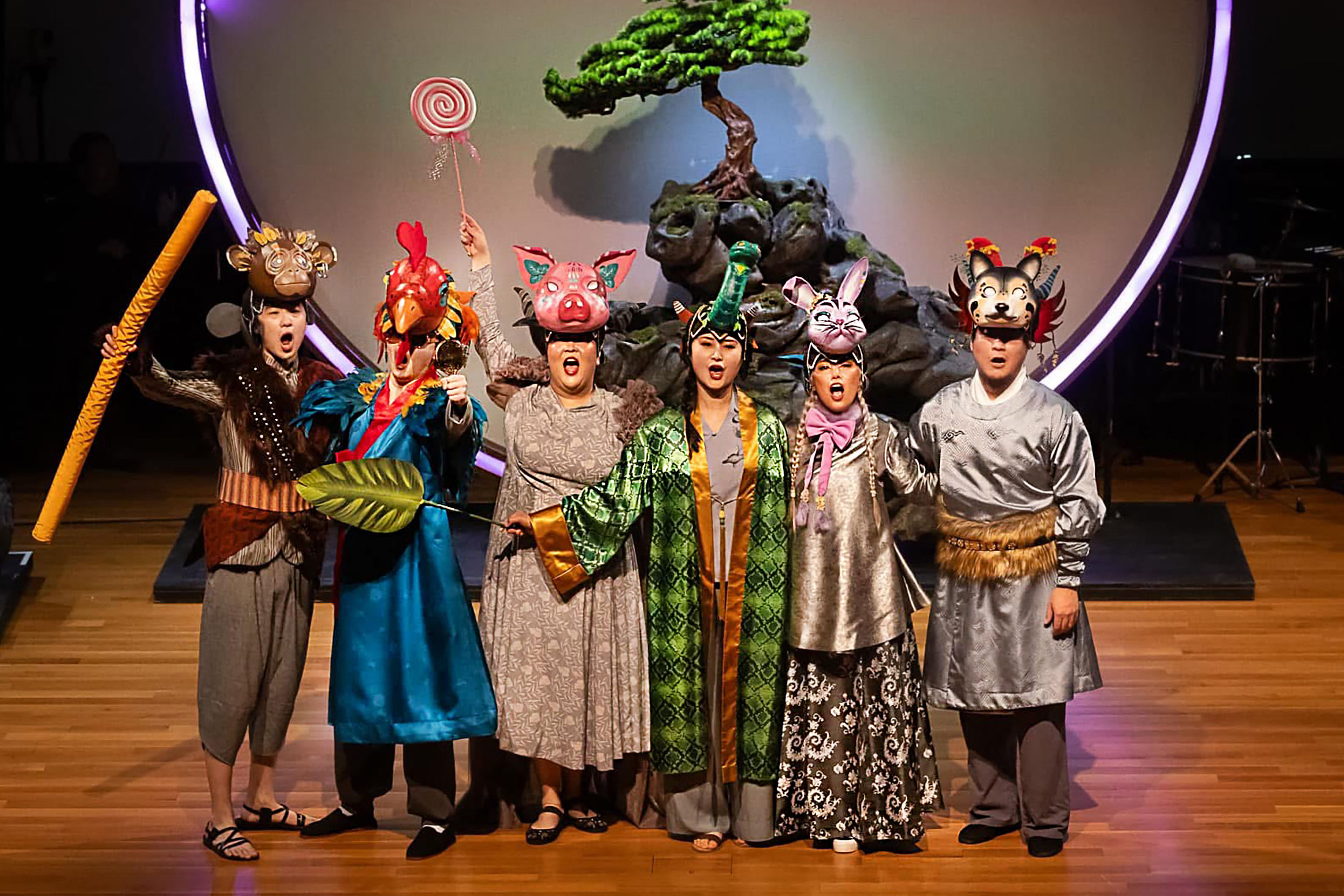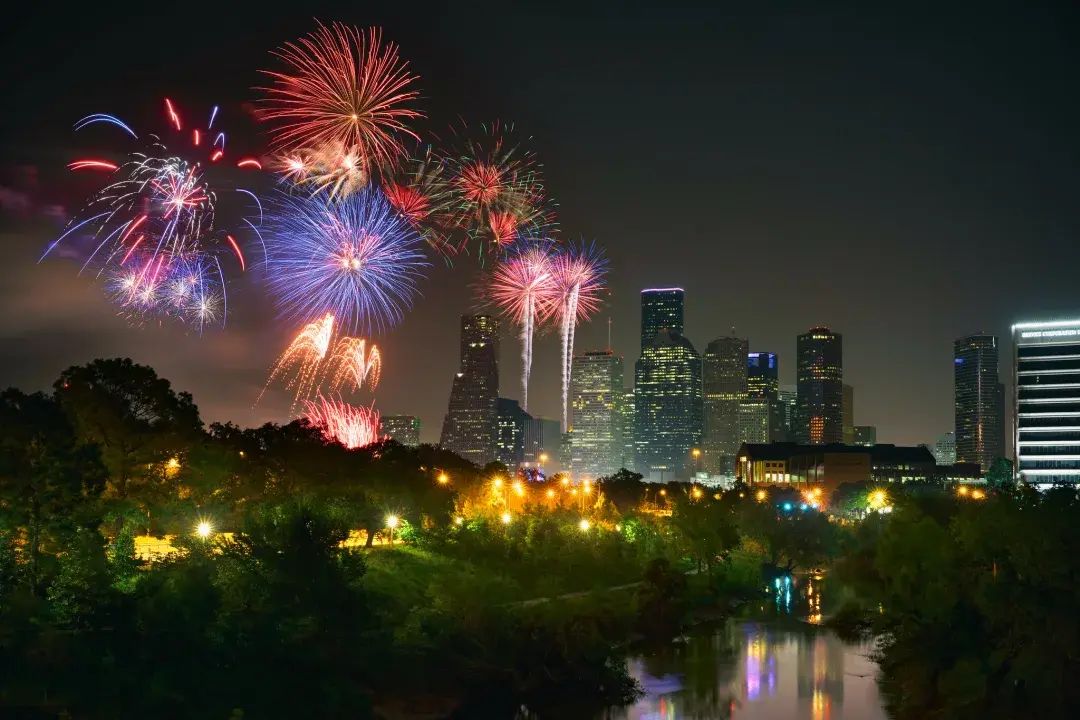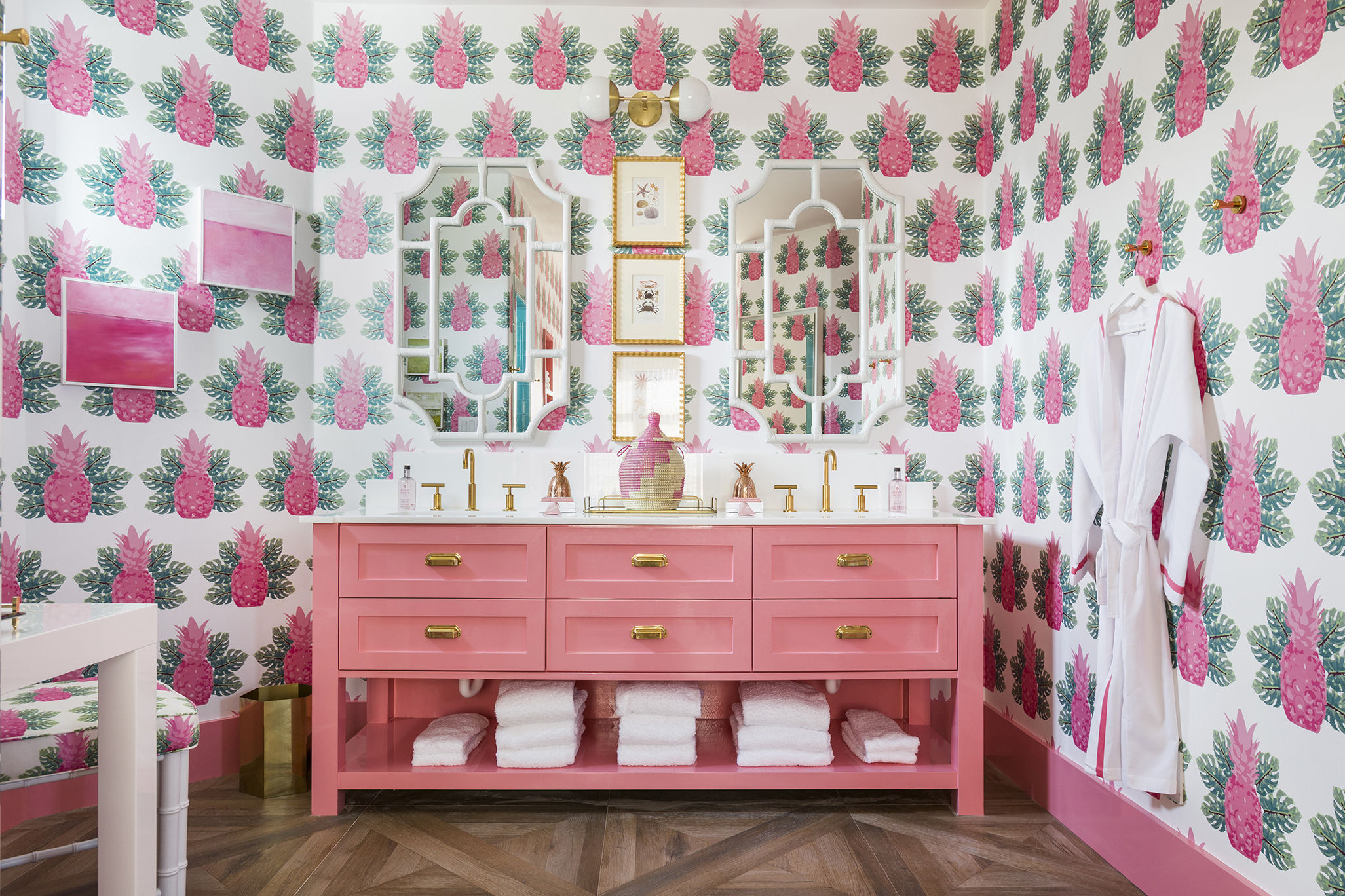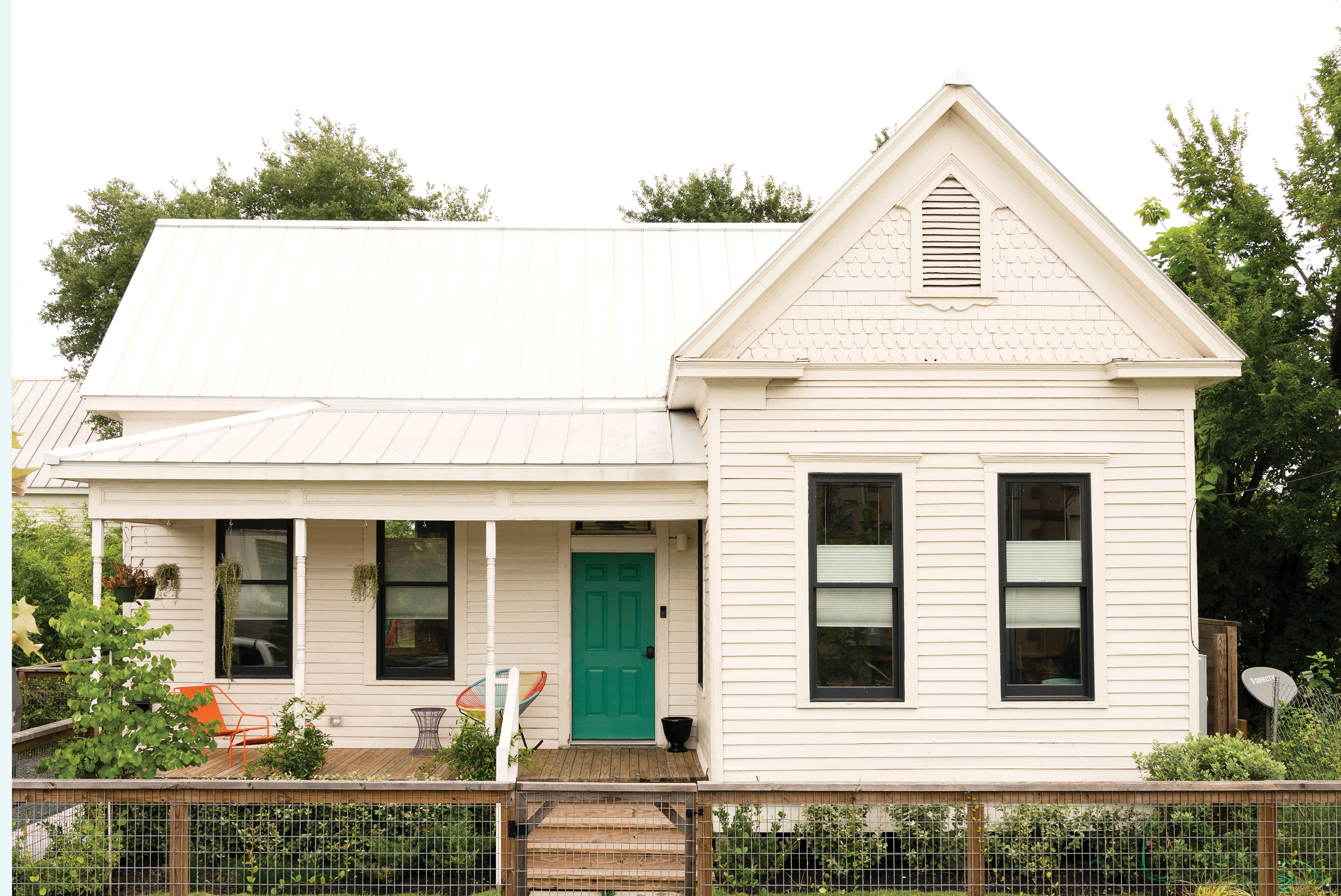
These Historic Bungalows in the East End Might Be Houston's Coolest Airbnbs
Feature image: Jack Thompson
Houston’s East End, 2014. Six circa-1890s bungalows slowly made their way from Garrow Street, traveling eight blocks before arriving at their new address at the corner of Sampson and Preston. Onlookers gathered to watch the strange parade, some with beers in hand, as the rundown houses, bolstered by giant metal beams, slid off their Cherry Companies trucks and onto cinder blocks in Michael Skelly and Anne Whitlock’s backyard.
This would be the first of many block parties of sorts centered around the couple’s home, a 100-year-old fire station that Skelly, a renewable-energy pioneer, and Whitlock, founding director of neighborhood nonprofit Connect Communities, purchased in 2013. They’d spent two years restoring it while carving out six additional lots from its massive, near-block-spanning property.
Each lot got its own bungalow, with the couple restoring three themselves and selling the rest. A pair of longtime friends—Robin Goldstein, a travel writer, and Jeff Kaplan, the man behind myriad local endeavors including Axelrad Beer Garden and New Living furniture—decided to go in together, purchasing two plots facing Preston Street. “The deal was, You get a free home,” Kaplan remembers.
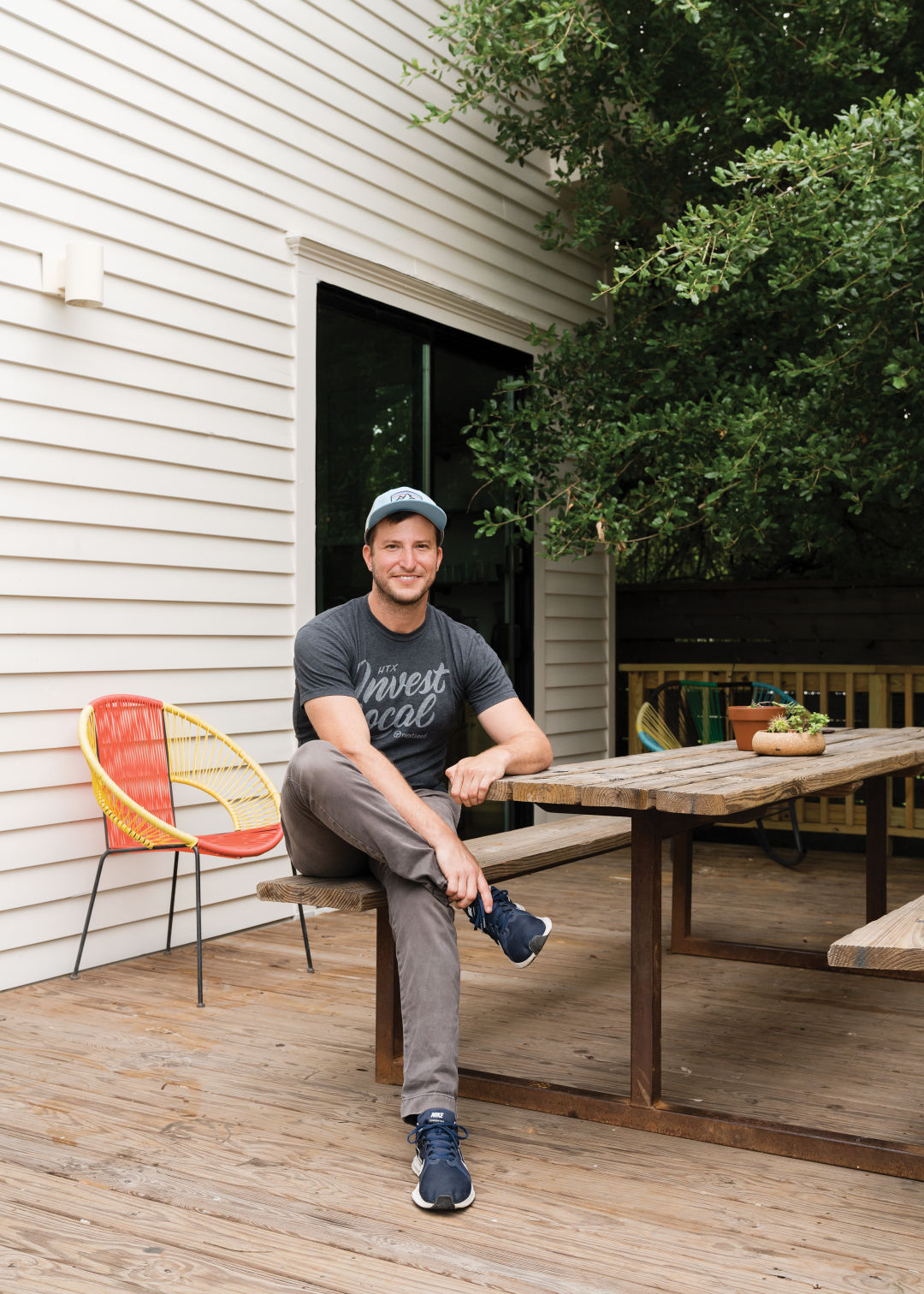
Jeff Kaplan on the bungalows' shared patio
Image: Jack Thompson
The relocated bungalows—whose previous owner had let the couple haul them off to make way for townhomes—were free with the purchase of the lots. Buyers just had to pay to move their own bungalows and agree to a few stipulations: No tall fences. Metal roof. Restore the house.
“Skelly warned me,” Kaplan says. “He said, This was going to be really hard.”
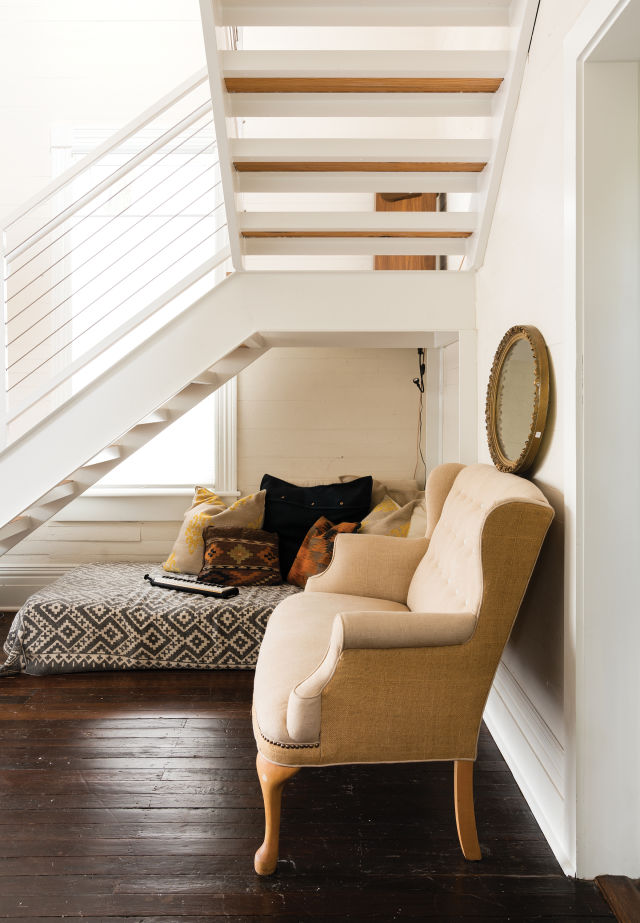
The stairway to the Moon Loft.
Image: Jack Thompson
He was right. Though structurally solid—with 12-foot ceilings, towering transom doorways, chocolatey hardwoods, and distressed-shiplap walls peeking through a century’s worth of wear and tear—the bungalows were not livable. “I can’t think of adjectives that are ugly enough to describe the interior,” Goldstein says. “Every inch of every floor and every inch of every wall had to be heavily worked on.”
It would all take a lot of time. The financing and appraisal process for renovations was complicated. Harvey hit, delaying things even more. After some back and forth, the two friends decided it would be best to turn their bungalows into Airbnbs. The plan was to rent out each of the homes’ seven total bedrooms. Eventually.
Since the structures were roughly 130 years old, they required more than cosmetics. They needed air-conditioning, insulation, modern plumbing and electricity, new windows—the works. “The window guy came and just didn’t understand this. He said, Don’t you know how much easier it would be to start over?” Kaplan remembers. “But that wasn’t the point.”
Both avid travelers, Kaplan and Goldstein knew what Airbnb guests want in their rentals: a unique factor, definitely, but also comfort. The duo added six sleek, skinny, subway-tiled bathrooms, adorning them with skylights that pour natural light into the spaces, just as the bungalows' traditional six-foot windows do elsewhere.
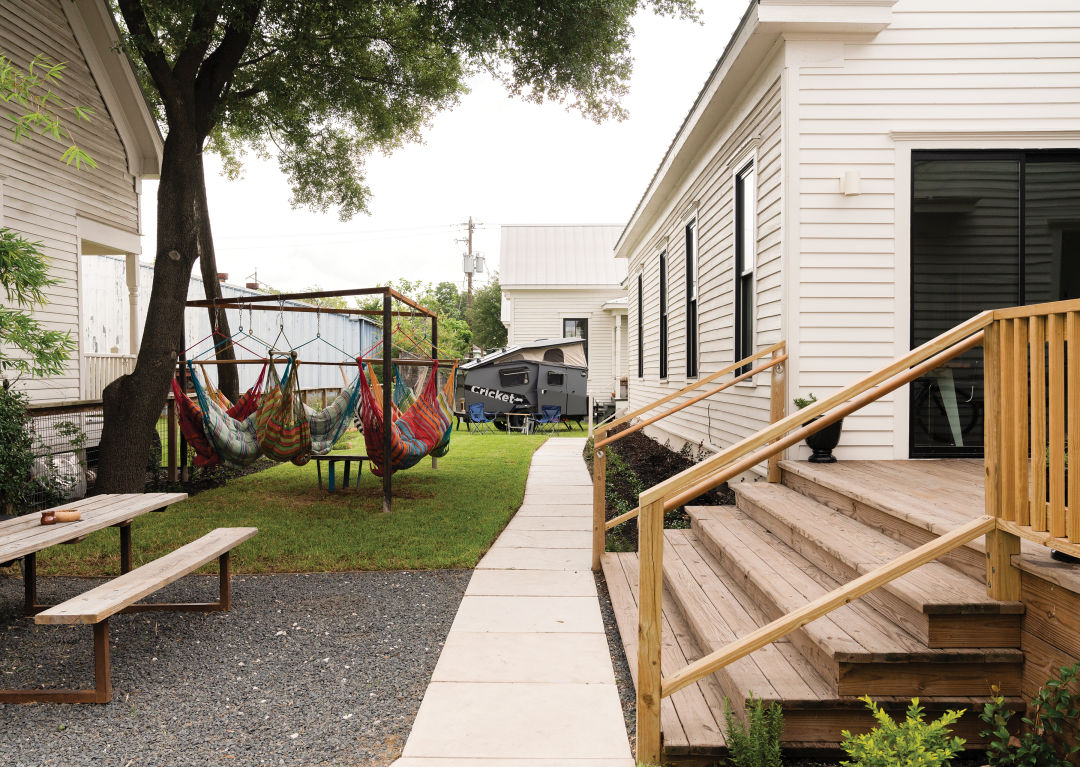
A TAXA Outdoors trailer (also on Airbnb, also Houston-made) in back, and the hammock garden.
Image: Jack Thompson
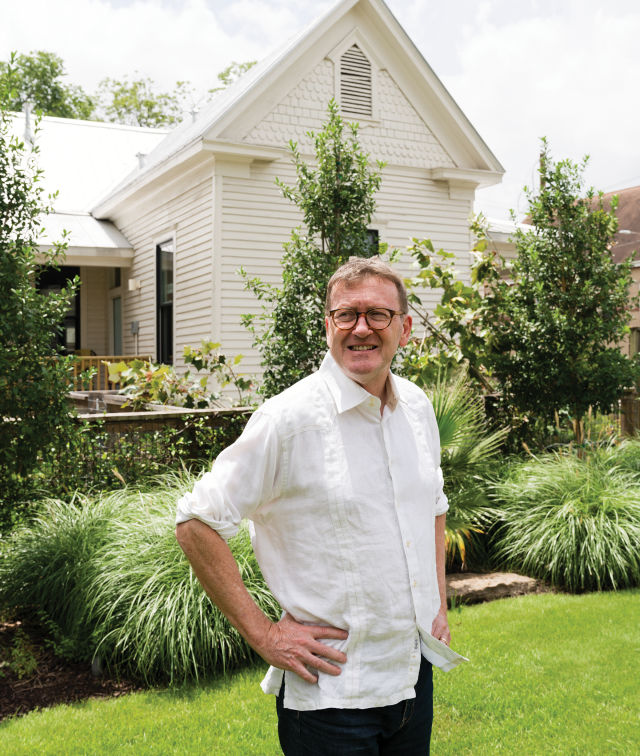
Michael Skelly and one of the bungalows he and wife Anne Whitlock restored
Image: Jack Thompson
Rather than adding chef’s kitchens, they opted for modest appointments, selecting concrete countertops, naturally finished cabinets, and open shelves. The idea was to leave room for guests to meet and mingle, whether in the shared kitchens, patio space, or hammock garden in the wide-open yard. “We want people who are staying here to feel like they are living in a neighborhood that’s built around a park-like environment,” Kaplan says.
Guests, they hoped, would meet people and feel as if they’re part of the neighborhood. “I had this concrete image of the perfect environment to stay in when I traveled,” says Goldstein. “Jeff and I first connected over a lot of those ideas. Our utopias matched up.”
Each bedroom has its own Texas-centric theme such as Fiesta, Yellow Rose, or Cherry, the last of which comes complete with artwork depicting Keith Cherry of Cherry Companies—the people to call when you want to move a home—in his iconic hat. And every design detail—from the eco-friendly mattresses, to the mismatched furniture, to the pendant lights, to the prints of Texas oilfields and native plants—is local, sourced directly from makers or area markets. “We’re proud to say that nothing in the homes is from IKEA,” says Kaplan. “Everything here is part of a Houston story.”
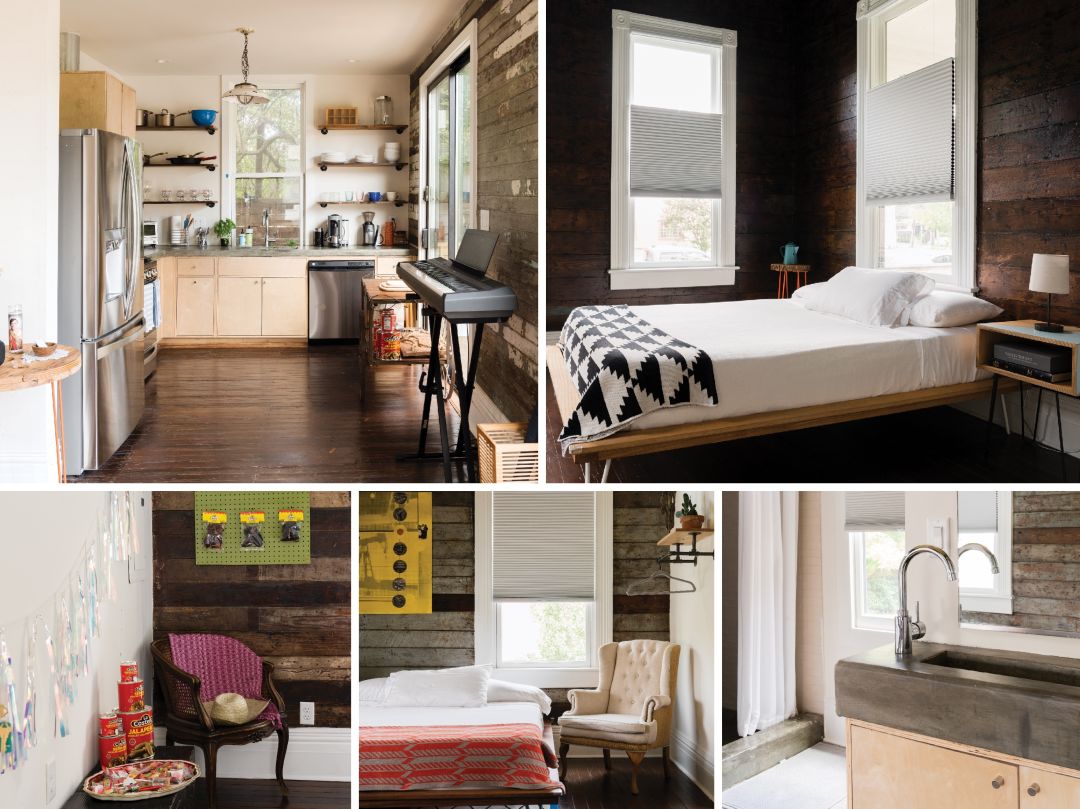
Clockwise from top left: One of their two minimalist kitchens; the design elements are locally made or found; one of six bathrooms across Kaplan and Robin Goldstein's two bungalows; the Yellow Rose room with artwork by Melissa Eason and a mattress from Kaplan's own Bungaloom; the Fiesta room.
Image: Jack Thompson
Renovations on Kaplan and Goldstein’s bungalows wrapped this summer, five years after they made their pilgrimage through the streets of the East End. The seven rooms were listed in July with help from Marco Sanchez, who serves as their official Airbnb host, and they’ve already welcomed a few traveling musicians on their way to Axelrad, who’ve put on impromptu concerts on the patio.
Work on the block’s other bungalows is complete, too, and Kaplan now lives in one that Skelly and Whitlock restored, allowing him to interact with his Airbnb guests, who he hopes will take part in impromptu fajita nights, join him for a bite at El Charro down the road, and, one day, have their morning coffee at the warehouse he’s converting across the street, which he’s dubbed The Plant.
“Our work creates value beyond being a real estate project. Part of that necessitates going slowly,” Kaplan says. “We hope people feel that it’s more connected to the community, that we didn’t just pop it in.”



